-
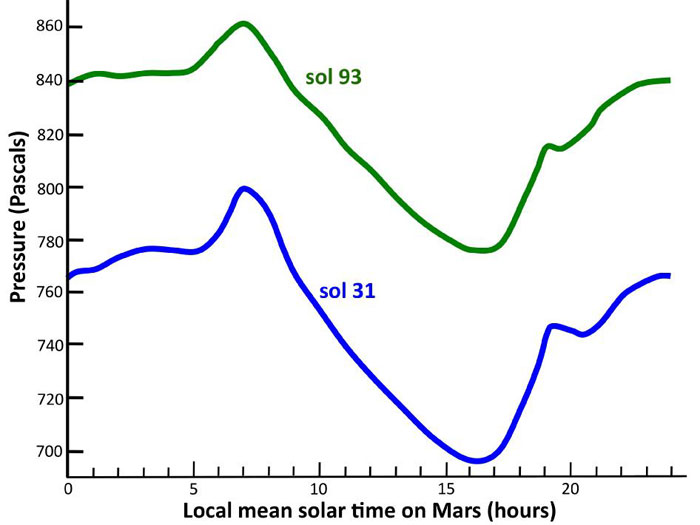
Pressure Cycles on Mars
This graph shows the atmospheric pressure at the surface of Mars, as measured by the Rover Environmental Monitoring Station on NASA's Curiosity rover. The blue curve shows data from Sol 31 (Sept. 6, 2012) and the green curve shows data from Sol 93 (Nov. 7, 2012). Pressure is a measure of the amount of air in the whole column of atmosphere sitting above the rover.
The overall increase in pressure between Sol 31 and Sol 93 is the signature of the entire Martian atmosphere growing in mass as we move into springtime in the southern hemisphere. This happens because the south pole receives more and more sunlight, and carbon dioxide vaporizes off of the winter south polar cap. Each year the atmosphere grows and shrinks by about 30 percent due to this effect. The curves also show a strong daily variation in pressure of around 10 percent, with a peak near 7 a.m. on Mars and a minimum near 4 p.m. This daily cycle in pressure is caused by a "thermal tide," a global-scale pressure wave in Mars' atmosphere driven by sunlight heating the ground and air.
Image credit: NASA/JPL-Caltech/CAB(CSIC-INTA)/FMI/Ashima Research
-
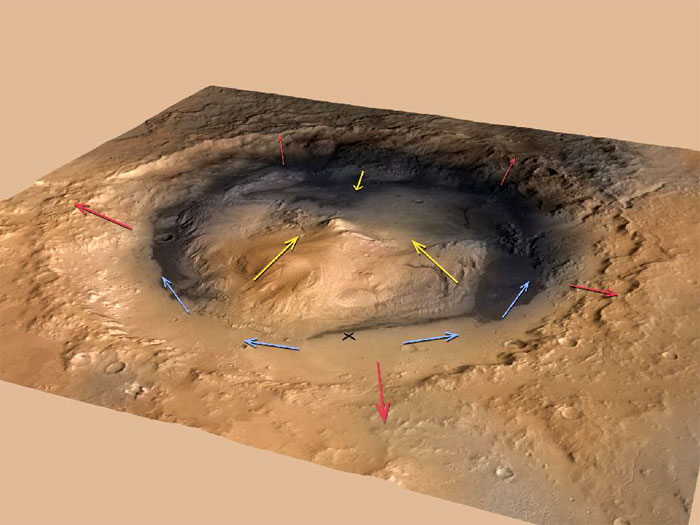
Mountain Winds at Gale Crater
This graphic shows the pattern of winds predicted to be swirling around and inside Gale Crater, which is where NASA's Curiosity rover landed on Mars. Modeling the winds gives scientists a context for the data from Curiosity's Rover Environmental Monitoring Station (REMS).
Curiosity's current location is marked with an "X." The rover's setting within a broad depression between the mountain dubbed "Mount Sharp" to the southeast and the rim of Gale Crater to the northwest strongly affects wind measurements collected by REMS.
This snapshot shows midday conditions. In the daytime, winds rise out of the crater, shown by the red arrows, and up the mountain, shown by the yellow arrows. Blue arrows indicate winds that flow along the depression and seem, to Curiosity, to be coming up out of the depression since Curiosity is near the bottom. At its current location, Curiosity may be seeing a mixture of these winds, making it challenging to understand its weather readings.
The patterns reverse in the evening and overnight, when winds flow in the downhill direction.
The background image is an oblique view of Gale Crater, looking toward the southeast. It is an artist's impression using two-fold vertical exaggeration to emphasize the area's topography. The crater's diameter is 96 miles (154 kilometers).
The image combines elevation data from the High Resolution Stereo Camera on the European Space Agency's Mars Express orbiter, image data from the Context Camera on NASA's Mars Reconnaissance Orbiter, and color information from Viking Orbiter imagery.
Image credit: NASA/JPL-Caltech/ESA/DLR/FU Berlin/MSSS
-
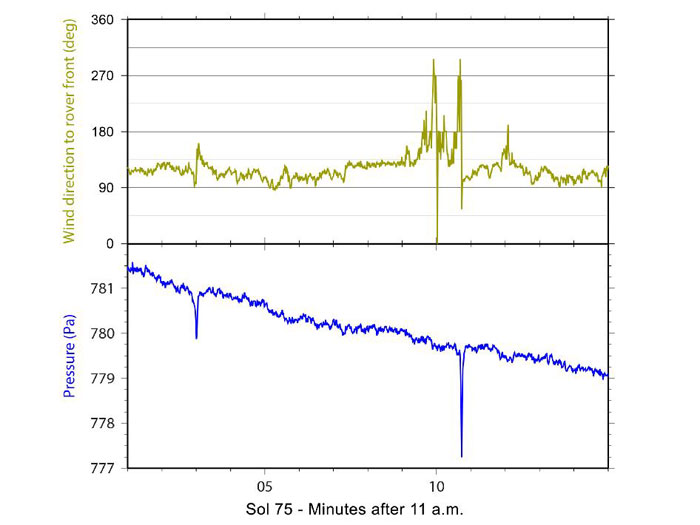
Signs of a Whirlwind in Gale Crater
Twenty-one times during the first 12 weeks that NASA's Mars rover Curiosity worked on Mars, the rover's Rover Environmental Monitoring Station (REMS) detected brief dips in air pressure that could be caused by a passing whirlwind. The blue line in this chart shows two examples, both shortly after 11 a.m. local Mars time, when the air pressure dipped on the 75th Martian day, or sol, of the mission (Oct. 25, 2012). In both cases, wind direction monitored by REMS changed within a few seconds of the dip in pressure, as indicated by the green line on the chart. That is additional evidence that the pressure dips were whirlwinds.
A Finnish, Spanish and American team is using REMS, which Spain provided for Curiosity, to watch for signs of dust devils -- whirlwinds carrying dust.
In many regions of Mars, dust-devil tracks and shadows have been photographed from orbit, but those visual clues have not been seen at Gale Crater, where Curiosity is working. The evidence from REMS indicates that whirlwinds may be forming in Gale Crater. While Curiosity is watching for them with cameras on some days, researchers are also considering the possibility that these swirling, convective winds do not lift as much dust at Gale as in other parts of Mars.
In this chart, the air-pressure scale is in Pascals. The wind direction scale is an estimate in degrees relative to the front of the rover. On Sol 75, the rover was facing approximately westward, and 90 degrees on this graph indicates winds coming from the north.
Image credit: NASA/JPL-Caltech/ CAB (CSIC-INTA)
-
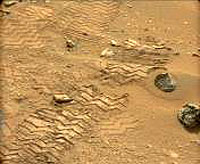
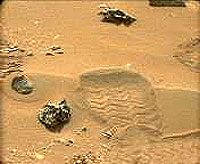
-

-
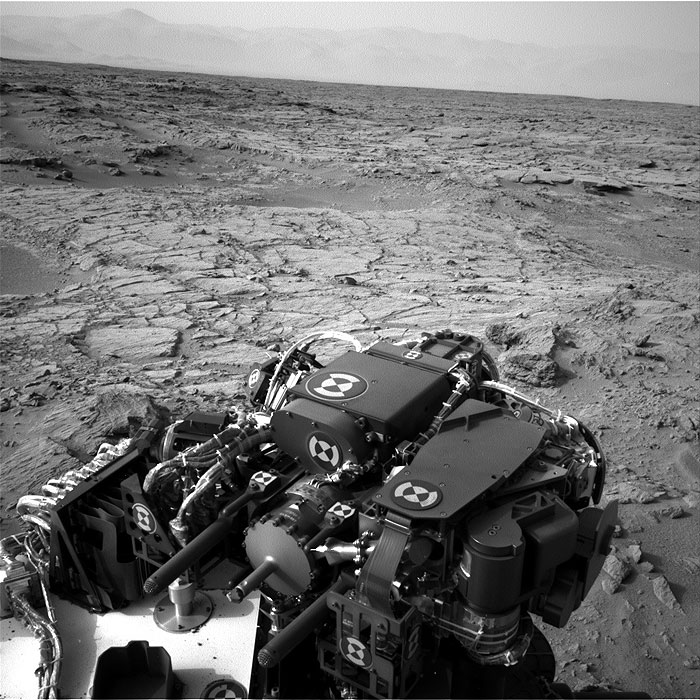
-
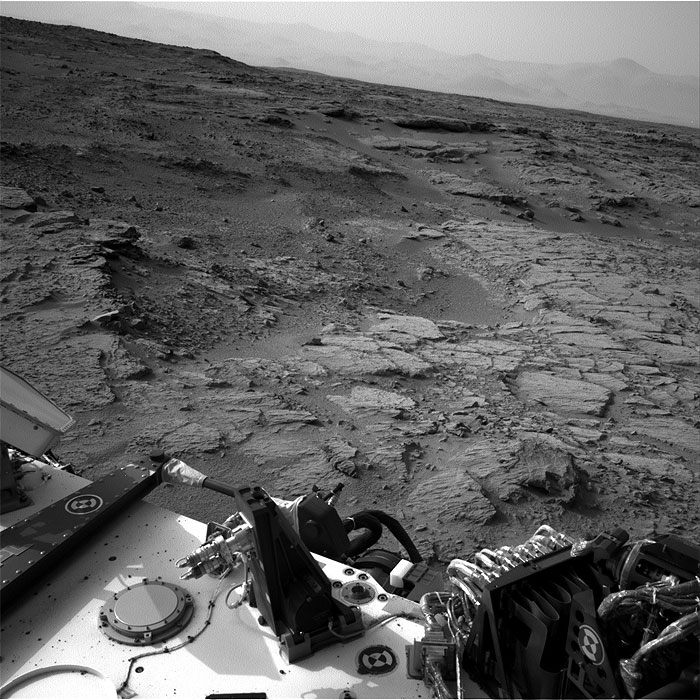
-
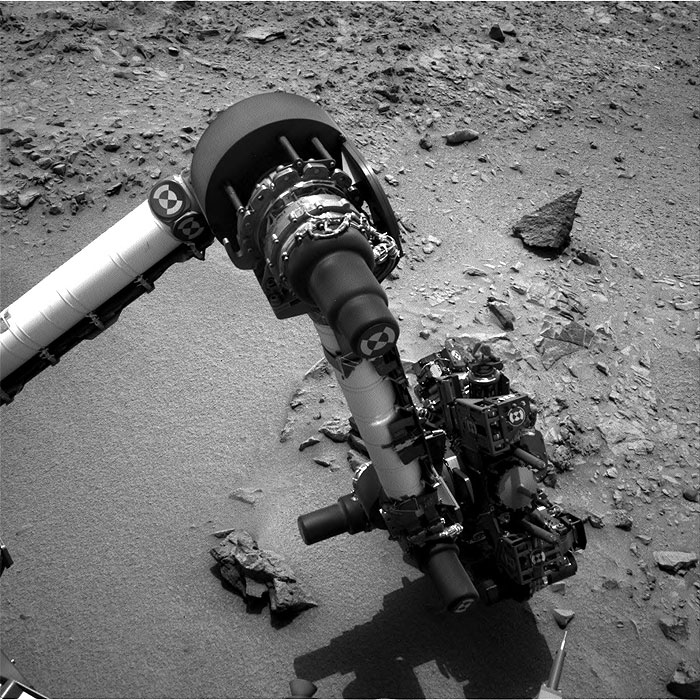
-
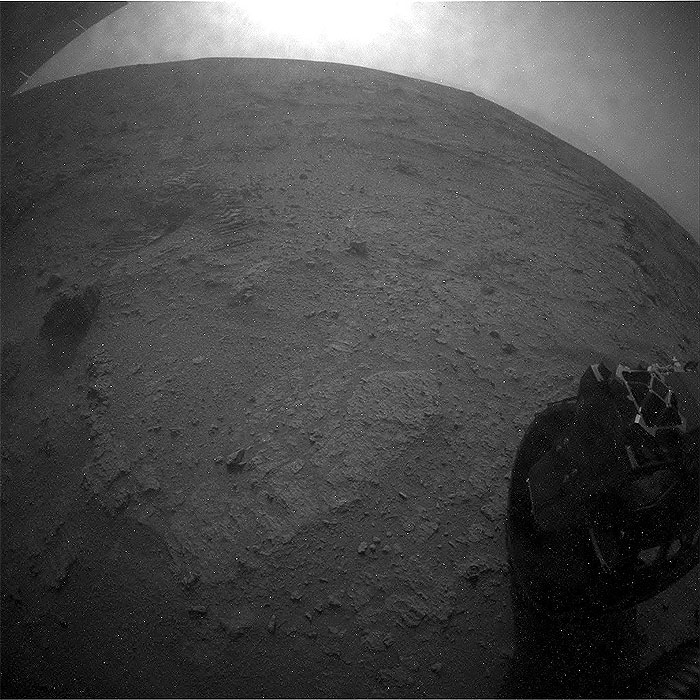
-
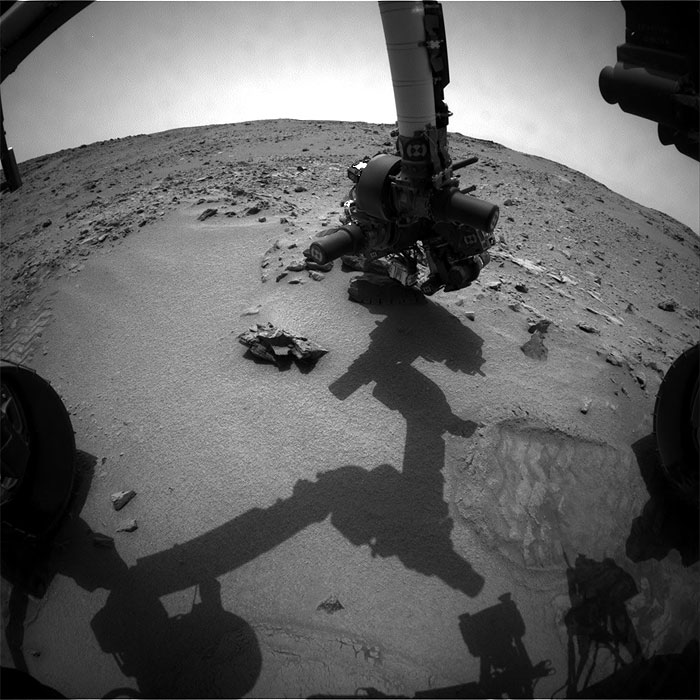
-
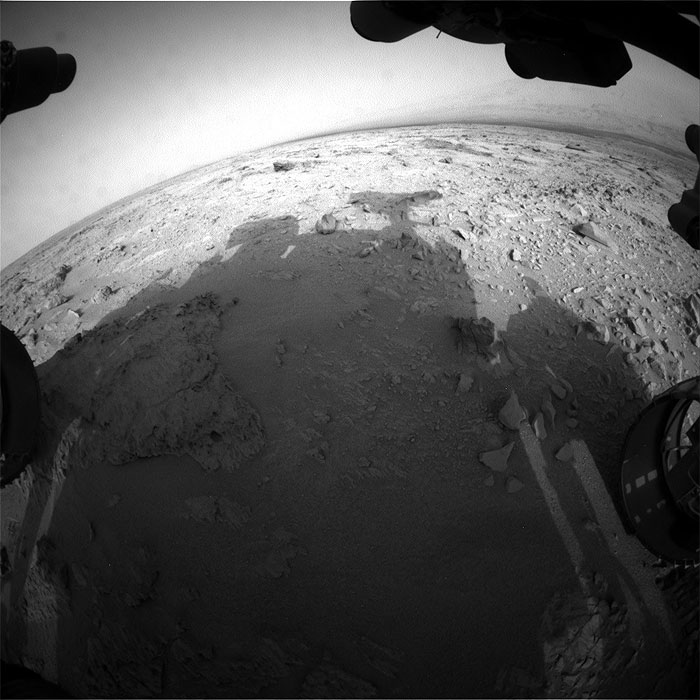
-

This image was taken by Navcam: Right A (NAV_RIGHT_A) onboard NASA's Mars rover Curiosity on Sol 103 (2012-11-20 01:47:16 UTC) .
-

This image was taken by Navcam: Left A (NAV_LEFT_A) onboard NASA's Mars rover Curiosity on Sol 103 (2012-11-20 01:47:16 UTC) .
-
Fotos: NASA
5750 Views
